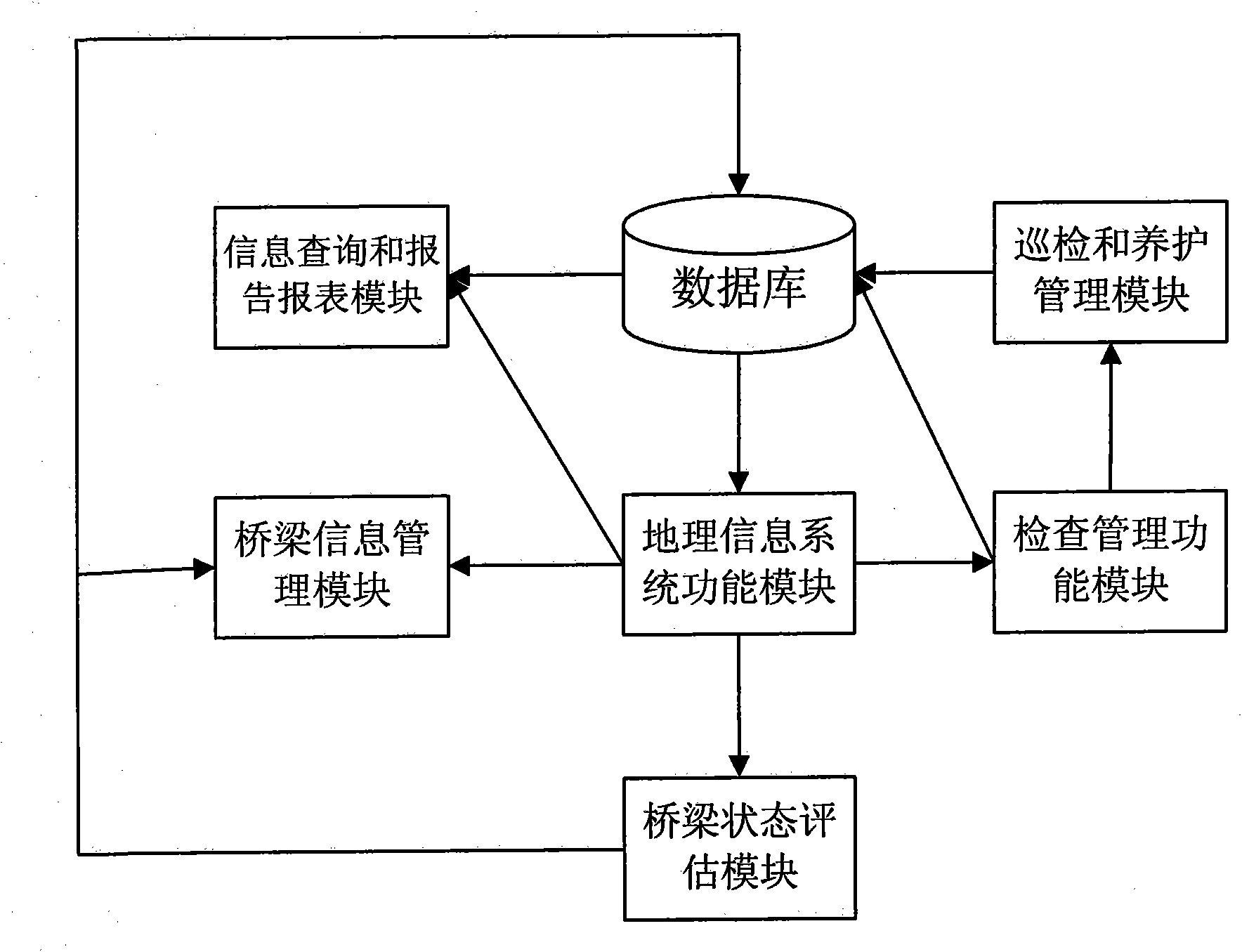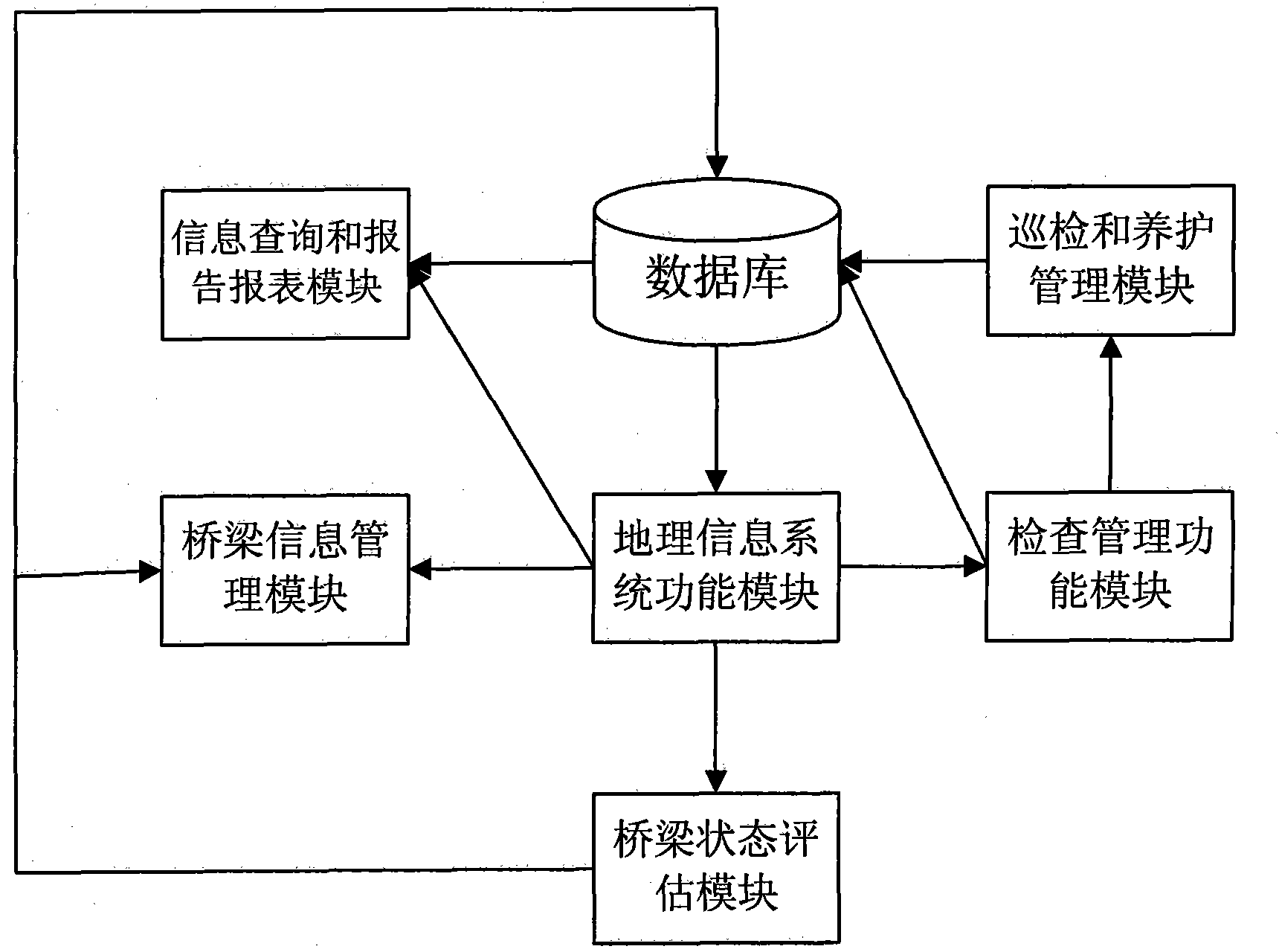WEB GIS-based information management system of bridges in region
An information management and information management technology, applied in the field of bridge management, can solve the problems of occupying resources, low work efficiency, affecting the life and normal use of bridges, etc., to avoid waste of resources and avoid loss of resources.
- Summary
- Abstract
- Description
- Claims
- Application Information
AI Technical Summary
Problems solved by technology
Method used
Image
Examples
Embodiment Construction
[0022] In order to make the object, technical solution and advantages of the present invention clearer, the present invention will be described in further detail below in conjunction with specific embodiments and with reference to the accompanying drawings.
[0023] figure 1 It is the structural flow chart of this system, and its data interaction mode is shown by the arrow in the figure. The system consists of geographic information system function module, bridge information management module, inspection management function module, inspection and maintenance function module, bridge status evaluation module, information query and report report function module and other sub-modules.
[0024] Among them, the geographic information system function module is used to comprehensively display and manage the situation, bridges and their information in the management area. This module is equipped with interfaces for other functional modules to facilitate function switching. The bridge...
PUM
 Login to View More
Login to View More Abstract
Description
Claims
Application Information
 Login to View More
Login to View More - R&D
- Intellectual Property
- Life Sciences
- Materials
- Tech Scout
- Unparalleled Data Quality
- Higher Quality Content
- 60% Fewer Hallucinations
Browse by: Latest US Patents, China's latest patents, Technical Efficacy Thesaurus, Application Domain, Technology Topic, Popular Technical Reports.
© 2025 PatSnap. All rights reserved.Legal|Privacy policy|Modern Slavery Act Transparency Statement|Sitemap|About US| Contact US: help@patsnap.com


